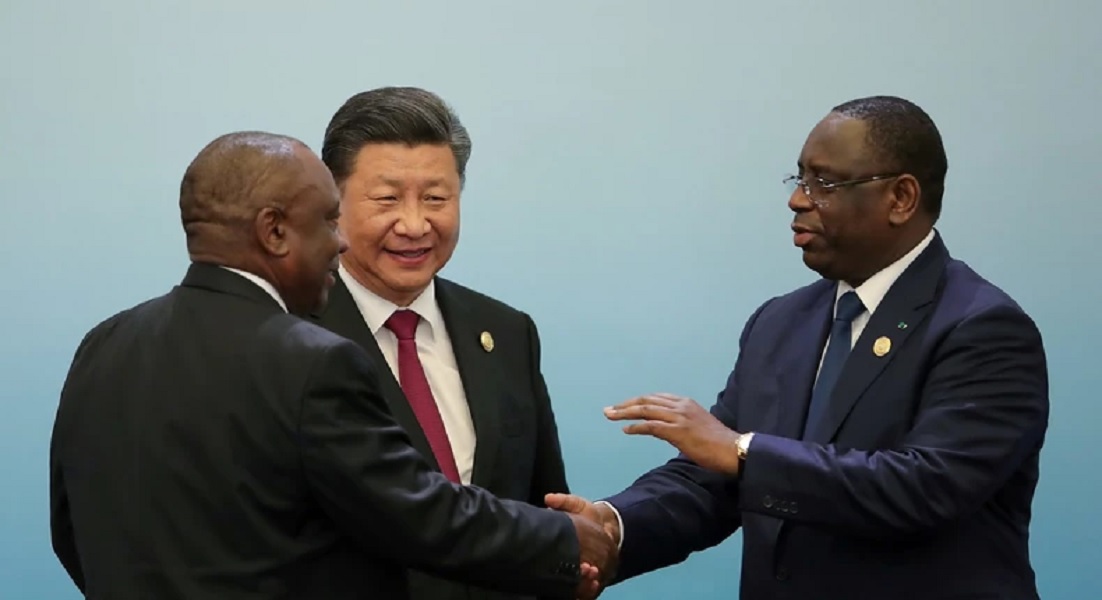With the current state of the global economy, the debate on the Africa-China trade continues to intensify.
Before global issues such as the Russia-Ukraine war, the global pandemic, and inflation levels that seem to be proliferating worldwide, China had been making a robust campaign in the African economy. But in recent months, this economic partnership is believed to have slowed down.
It would seem now that most of the conversation surrounding the Sino-African trade is the unremitting Chinese debt dangling like a dark cloud over Africa.
However, the Chinese government has dismissed this narrative, noting that its intention with the continent is to establish an equally beneficial alliance, between both markets.
Responding to the accusation of not adhering to the G20’s common framework for restructuring the debt of countries in difficulty, China affirmed that it will annul 23 of its loans to 17 African countries, by the end of August.
China also disclosed its intention to redirect the equivalent of $10bn of its Special Drawing Rights (SDRs) to Africa through the International Monetary Fund(IMF) and has stated that its relationship with the continent is stronger now than ever.
So, with this, the question is, what is a fact, and what is baseless, how well is China’s relationship with Africa fairing, and what are the nuances in the trade between both parties that are hiding in plain sight?
Below is a list of things Africans need to understand about the continent’s trade relations with their Asian associates:
Trade is in good shape: According to Chinese customs data, the trade between both parties in 2022 thus far has been evaluated at $137.4bn indicating a 16.6% compared to the same period in 2021. Some Chinese trade ports are closed to Africa due to the pandemic, and these Covid-19 protocols may present some problems in the Q2 of 2022. However, the Chinese government is confident that it can mitigate this issue, and it has been projected that the annual trade number this year is going to surpass that of last year.
More dynamic trade: Since the beginning of the year, there has been a 19.1% increase in the products China imports from Africa. Although the Asian giants still export more to the continent than it imports from it, China’s import from Africa currently stands at $60.6 billion compared to its export to the continent which is $76.8 billion. These numbers denote the closing of a trade gap between both parties.
China’s increased presence in Africa: Drawing from a small sample size, it would seem that China’s presence in Africa is steadily increasing. Last year, China’s trade with Africa reached a historical high of $254 billion. There are currently over 2 million Chinese people in Africa based on their financial interests in the continent. The value of trade between China and Africa is 8 times higher than the trade between the US and Africa, and 15 times higher in the case of France and Africa.
Trade partners: China’s strongest trade ties in Africa lies with South Africa, Nigeria, Angola, and Egypt. Last year the trade valuation between China and these countries stood at $54 billion, $26 billion, $23 billion, and $19 billion respectively. However, China is looking to diversify as it is currently eying agricultural projects all across Africa. It was reported that 500 Chinese agricultural experts will be deployed to Africa, and $10bn in trade credit will be made available. Also, China has recently allowed the import of fresh avocados from Kenya, citrus fruits from Zimbabwe, soya beans from Tanzania, beef from Namibia and Botswana, and fruit from South Africa.
Low import input: Although there has been a significant increase in the products Africa exports to China, this increase still hasn’t moved the needle that far. Currently, Africa as a continent combines to account for just 3% of China’s imports. Meanwhile, Europe and Asia account for a combined 36% of all its imports to the middle kingdom, while the US alone accounts for 10%.
Source: PulseGhana

